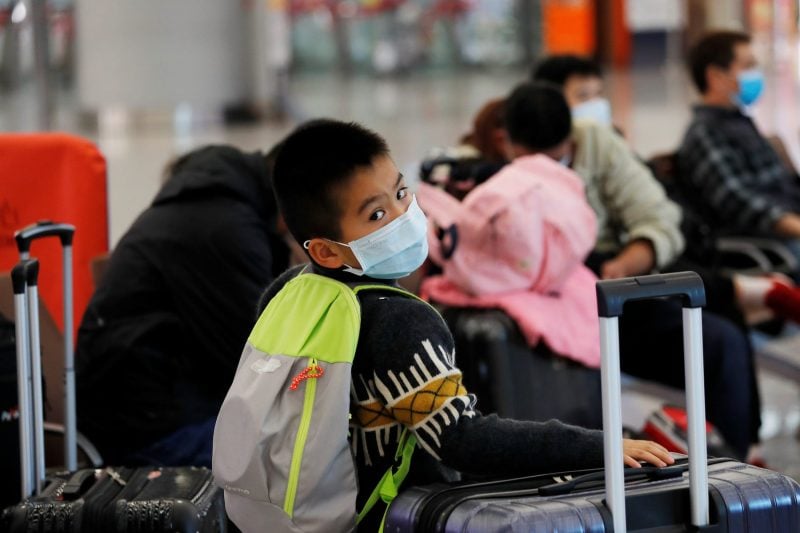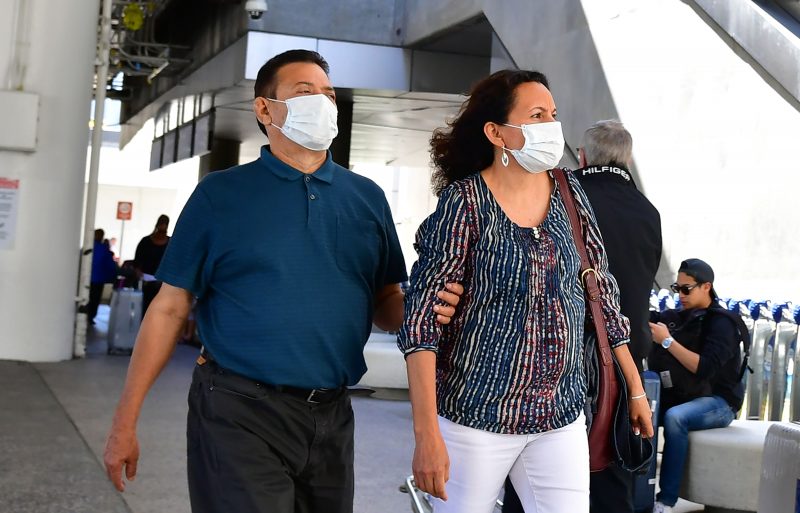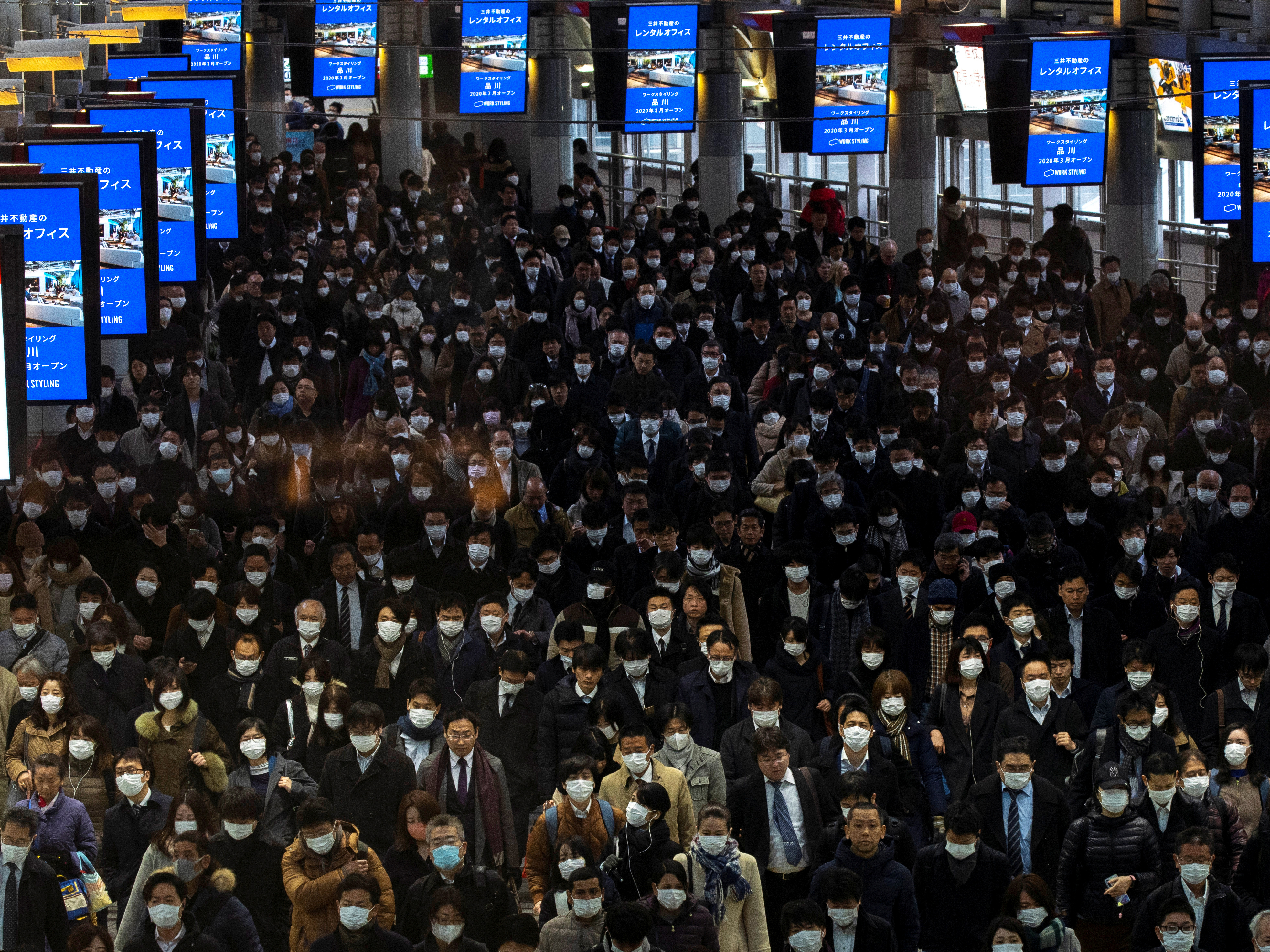- Harvard epidemiologist Marc Lipsitch told the Deep Background podcast that the coronavirus could become a pandemic that affects between 40% and 70% of the world’s adult population – at least 3 billion people.
- The coronavirus has killed at least 3,250 people and infected more than 95,000 since December. (For the latest numbers, see Business Insider’s live updates.)
- If that many people get infected, Lipsitch said, the outbreak would then taper off and person-to-person transmission would decline.
- The way to prevent that level of infection is to delay the virus’ spread – via quarantines and reduced contact between people – until researchers can produce a vaccine.
- Visit Business Insider’s homepage for more stories.
In the last week, the number of global coronavirus cases jumped by more than 10,000; in the US, cases nearly doubled and 11 people died.
As the outbreak nears pandemic level – more than 95,000 people have been infected, and the virus has spread to more than 80 countries – the question remains: How much worse will this get?
Much worse, according to Marc Lipsitch, an epidemiologist at Harvard University.
“There’s a chance that between 40% and 70% of the world’s adult population could end up infected with coronavirus,” he told podcast host Noah Feldman on a February 28 episode of Deep Background.
That would mean the world could see between 3.1 billion and 5.5 billion coronavirus cases before the outbreak subsides.
There's a caveat to this alarming prediction, though: Lipsitch said 40% to 70% of the world's adults would only get infected in the absence of strong countermeasures. If countries continue to institute "population-level" interventions like "canceling public gatherings, potentially closing schools ... working from home, and other kinds of ways of reducing contact between people," Lipsitch said, the outbreak could slow or stop before it hits that point.
Halting the virus' spread also requires continuing to isolate and quarantine known or possible coronavirus cases, he added.

Lipsitch noted as well that "40% of adults getting infected" doesn't mean 3.1 billion people would get severely ill or die. But it would mean that some proportion of them would have symptoms, and around 1% to 2% would die.
Modeling a pandemic
The World Health Organization has yet to declare the coronavirus outbreak a pandemic, though the group did declare it a public-health emergency.
Lipsitch disagrees: "I think that there's a very good chance that were in the beginning of a pandemic," he said.
He told Feldman that he came to this conclusion using mathematical and computer models that mapped how other viruses with a similar level of contagiousness, like an influenza pandemic, spread worldwide.
"In the largest two pandemics of the 20th century, around 30% to 40% of people became symptomatically infected, and that's lower than the total proportion that got infected," he said.
On March 3, a week after his podcast appearance, Lipsitch tweeted that he had amended his prediction to be that only 20% to 60% of adults would be infected.

Lipsitch left children out of his predictions, he added, because he said experts "don't really understand what's going on with them." So far, very few children have been infected with the coronavirus. There have been no deaths reported in children younger than 9. In a recent study of 44,000 coronavirus patients in China, only 1% of total cases were kids.
But Lipsitch's predictions could wind up being too high if a few variables don't align with his assumptions.
First, it's possible that the transmission rates and patterns in countries outside of China are fundamentally different than how the virus spread in its place of origin. The world might also benefit from warm weather, since respiratory illnesses like the flus and coronaviruses are seasonal. Higher temperatures minimize how successfully those viral particles can spread.
"We expect seasonal changes will modestly reduce transmission, but not very much, and not enough to stop it," Lipsitch said.
'It will be very unpleasant'

The coronavirus outbreak will stop growing either after enough people have caught the disease and some develop immunity (though instances of reinfection have been documented), or after researchers develop a vaccine.
According to Lipsitch, infections or inoculations in 40% to 50% of the world's adult population would be enough to stymie the virus' spread.
"Then transmission won't be able to take off again," he said.
To keep as many people as possible from getting sick, he added, governments should seek to minimize contact between large groups of people. But restrictions like cancelling school and forbidding public gatherings "would have to be in place for a very long time and will be very unpleasant for many people, worse than unpleasant," Lipsitch said.
Nancy Messonnier. director of the National Center for Immunization and Respiratory Diseases, echoed similar suggestions during a recent press briefing.
"People need to start thinking about what works best for them and their communities to blunt the impact of virus," she said.

Lipsitch said it's important for people to start mentally preparing for a future in which 40% of adults worldwide get infected and governments institute interventions accordingly.
"At the moment, we're all in denial. It doesn't feel real because nothing is happening visibly in our countries," he said of people living outside current coronavirus hotspots. "If the scenario plays out, as it feels like it might, we might be doing a lot of work from home, schools will get canceled for goodness knows how many months."

